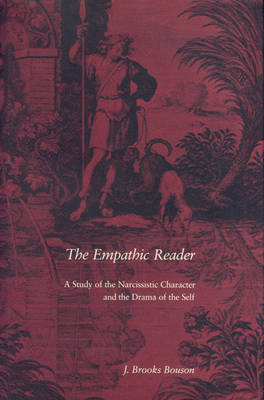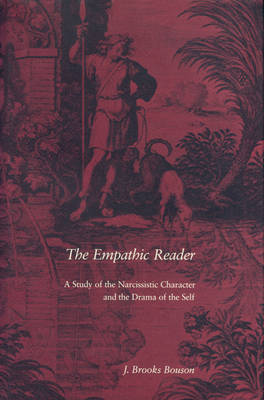
- Afhalen na 1 uur in een winkel met voorraad
- Gratis thuislevering in België vanaf € 30
- Ruim aanbod met 7 miljoen producten
- Afhalen na 1 uur in een winkel met voorraad
- Gratis thuislevering in België vanaf € 30
- Ruim aanbod met 7 miljoen producten
Zoeken
The Empathic Reader
A Study of the Narcissistic Character and the Drama of the Self
J Brooks Bouson
Hardcover | Engels
€ 46,45
+ 92 punten
Omschrijving
In a series of important studies, American psychoanalyst Heinz Kohut focused attention on a fundamental aspect of human behavior: the desire each person feels for a sense of relationship with and empathic responsiveness from others. This book offers the first sustained application of Kohut's work to the study of literature and sheds new light on the complex nature of interactions between texts and readers. J. Brooks Bouson investigates nine representative narcissistic characters from works by Atwood, Bellow, Conrad, Dotosevsky, Kafka, Lessing, Mann, and Woolf. Combining a careful examination of individual characters and texts with an analysis of the critical commentaries they have generated, Bouson makes us aware of the narcissistic dramas encoded in texts, dramas that are often unconsciously replicated by critics in their interpretive narratives. In an essential way, Bouson writes, the meaning of literary work grows out of the empathic event that occurs between the reader and the text. The book establishes a place for Kohut's self psychology in the study of literature and provides a refreshing perspective on the empathic dynamics of the reading and critical processes.
Specificaties
Betrokkenen
- Auteur(s):
- Uitgeverij:
Inhoud
- Aantal bladzijden:
- 216
- Taal:
- Engels
Eigenschappen
- Productcode (EAN):
- 9780870236785
- Verschijningsdatum:
- 28/09/1989
- Uitvoering:
- Hardcover
- Formaat:
- Genaaid
- Afmetingen:
- 156 mm x 235 mm
- Gewicht:
- 503 g

Alleen bij Standaard Boekhandel
+ 92 punten op je klantenkaart van Standaard Boekhandel
Beoordelingen
We publiceren alleen reviews die voldoen aan de voorwaarden voor reviews. Bekijk onze voorwaarden voor reviews.











